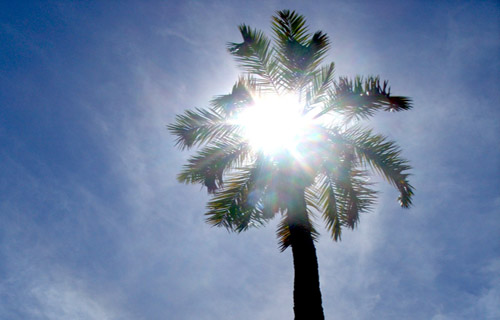Mopipi is a popular tree in the southern african region, and can mostly be found in semi-arid locations of the region. Largely concentrated in the south eastern part of Botswana, the trees rarely grow in clusters and would usually be found dotted around the land. Noticably always on ploughing fields standing lone and strong as it is the culture of the people to never cut the tree down. It does seem to have a sacred and mystic aura about it, even when one sits in its cool shade shielding the strong Botswana sun that we all love to hate.
 So, why the topic mopipi o thuntse?, well in the setswana language o thuntse is a verb used to describe the state of the tree, which is the time it has produced flowers, which translated to saying that it has blossomed. I wondered why the blossom of this tree was so important and something spoken about with the people of the region. It was interesting to discover as i had the opportunity to during the last couple of months, which is the transition from winter to spring to summer, which happens rather quickly in these parts.
So, why the topic mopipi o thuntse?, well in the setswana language o thuntse is a verb used to describe the state of the tree, which is the time it has produced flowers, which translated to saying that it has blossomed. I wondered why the blossom of this tree was so important and something spoken about with the people of the region. It was interesting to discover as i had the opportunity to during the last couple of months, which is the transition from winter to spring to summer, which happens rather quickly in these parts. Rainfall had been irregular and on a massive decline in the past two or three years, and the land had been very dry with dams almost empty on a cold July afternoon when taking a bush walk with a friend when we noticed this tree that was lush green with bright yellow dottings that resembled cotton balls strewn all over the tree. Now this being an unusual sight during the time of the season i was in doubt as to wether it was natural. As we approached the tree there were flower stems made up of thousands of tiny little flowers that would bear the fruit known as motlopi. I asked why this tree seemed out of place with flowering like the rest of the plants in the area and was later told that the tree grew only where there was lots of underground water, and the flowering of the tree is a sign that the lands thirst was going to be quenched with bountiful rain. Something that was hard to beleive since it was the middle of winter, but as time progressed I was shown many more signs in nature that showed the rains were coming such as the falling of a chichiboa from its nest tree the acacia was also a sign that rains were coming. So i waited and observed, and months later in november rains are showering the bush and the knowledge say that this is the earliest it has rained in four years and it was a sign that the skies were plenty with rain.
Rainfall had been irregular and on a massive decline in the past two or three years, and the land had been very dry with dams almost empty on a cold July afternoon when taking a bush walk with a friend when we noticed this tree that was lush green with bright yellow dottings that resembled cotton balls strewn all over the tree. Now this being an unusual sight during the time of the season i was in doubt as to wether it was natural. As we approached the tree there were flower stems made up of thousands of tiny little flowers that would bear the fruit known as motlopi. I asked why this tree seemed out of place with flowering like the rest of the plants in the area and was later told that the tree grew only where there was lots of underground water, and the flowering of the tree is a sign that the lands thirst was going to be quenched with bountiful rain. Something that was hard to beleive since it was the middle of winter, but as time progressed I was shown many more signs in nature that showed the rains were coming such as the falling of a chichiboa from its nest tree the acacia was also a sign that rains were coming. So i waited and observed, and months later in november rains are showering the bush and the knowledge say that this is the earliest it has rained in four years and it was a sign that the skies were plenty with rain.







 10/30/2012
10/30/2012
 kMoe
kMoe

















